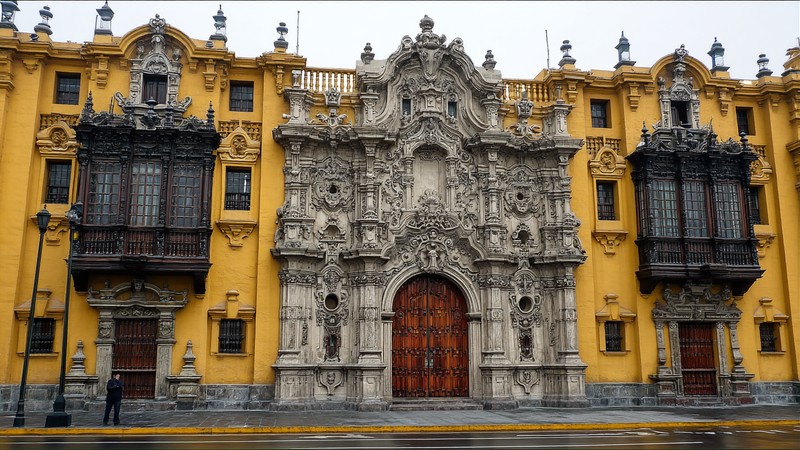
Lima, founded by Francisco Pizarro in 1535, became the capital of the Spanish Viceroyalty of Peru. The city’s historic centre showcases an architectural blend of Spanish Baroque and Renaissance elements with indigenous influences known as Andean Baroque. Many colonial buildings survived devastating earthquakes thanks to the ingenuity of local artisans and European architects working together.
Key Landmarks
- Basilica Cathedral of Lima: Consecrated in 1535, this massive cathedral anchors the Plaza Mayor and houses Pizarro’s tomb.
- Monastery of San Francisco: An outstanding example of Moorish‑influenced architecture with catacombs open to visitors.
- Plaza Mayor: The historic square is framed by the Government Palace, Archbishop’s Palace and Municipal Palace, host to festivals and independence celebrations.
Andean Baroque
This style blends Spanish motifs with Andean iconography, as seen in the carved façades of churches in Cusco and Ayacucho. Stucco work depicts local flora and fauna, emphasising the fusion of cultures.
Exploring the Historic Centre
Wander colonial streets lined with wooden balconies, visit the Aliaga House (occupied by the same family since 1535), and sample criollo dishes in centuries‑old taverns. Guided tours reveal layers of history and contextualise Peru’s colonial past.
The Historic Centre of Lima is a UNESCO World Heritage site, reflecting its significance in the transmission of European art and architecture to the New World and the contributions of local craftsmen.
Ready to Secure Your Machu Picchu Tickets?
Don't wait for tickets to sell out. Set up monitoring now and get instant alerts when tickets become available for your travel dates.
Frequently Asked Questions
What are the key Landmarks to Visit in Lima's Historic Centre?
How Does Andean Baroque Architecture Differ From Traditional Spanish Baroque?
What is the Significance of the Basilica Cathedral of Lima?
Are There Guided Tours Available That Explore Lima's Colonial History?
What Types of Criollo Dishes can i Expect to Sample in Lima?
Why is the Historic Centre of Lima Designated as a Unesco World Heritage Site?
What can Visitors Learn About the Influence of Indigenous Cultures in Lima's Architecture?


